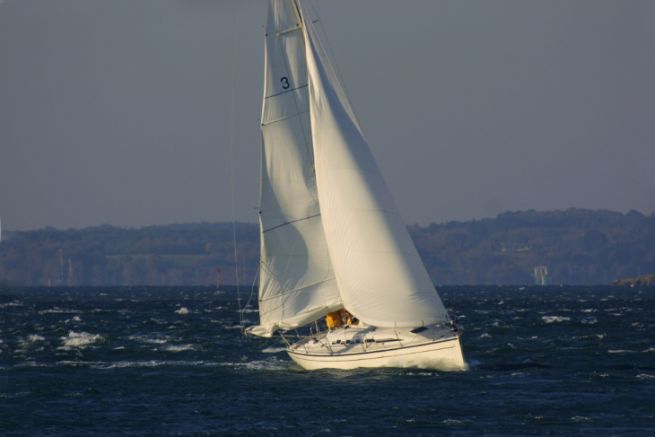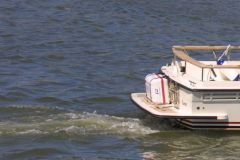Upwind too down
Sailing upwind requires concentration and methodology. When you start out, you tend to cut too wide. The steeper heel and speed give you an exhilarating feeling. However, the skipper will tend to move away from his course and lengthen his route.
What about faire?? When sailing, speed alone doesn't count. You also have to consider your heading. Prefer a course as close to the wind as possible, even if it means going slower.
A canvas boat
It is the sea conditions, the crew, but also your boat that will determine when to reduce the canvas. While it's not always easy to know when to do it, keep in mind that when cruising, an under-canvas boat will move forward better than an over-canvas boat, which will tend to drift.
What about faire?? Reduce the canopy by reefing or reducing the jib. Remember that it is easier to take a reef before the forecast gale. By reducing the sail, your boat will gain speed and heel less.

Sails too tucked in
When the sails are too tucked in, the boat heels more and you feel like you're going faster. But that's not true.
What about faire?? Trim your sails to the limit. To do this, tuck your sails in tightly and gently trim them until you get a slight tuck in the sail. To do this, look at the luff of your sail (along the forestay for the jib or the mast for the mainsail). Then take in a few centimetres of sheet. You can also use the jib hanks.
A poorly adjusted genoa cart
When sailing under genoa, it is important to adjust the position of the sheeting point, especially if you are sailing with a furling genoa. If your sail is incorrectly trimmed, it will be too hollow or too open upwards and greatly reduce the performance of your boat.
What about faire?? The basic setting is to pass the sheet through the bisector of the sail. It will be necessary to move the traveller forward in light weather and when partially furling the sail and backward in steady winds, or when unfurling the sail.

A mainsail too hollow or too flat
A mainsail that is too hollow is often too powerful. Before reefing, reduce power by tensioning the halyard and the foot. To do this, first shock your sail to reduce the strain on the ropes.
On the other hand, beginners also tend to overstretch the mainsail when hoisting it, making it flat.
What about faire?? In the small weather, the halyard just needs to be in tension, no more. The presence of small creases along the handlebar will not have much effect on your performance. In stronger winds, tension the luff and the foot well.
A few tips
Don't force the bar. If it's hard, there's a problem. To try to remedy the problem, trim or reef the mainsail, for example. Also check your rudders.
Adjust your sails at each change of course, your boat will be more efficient and the navigation more pleasant.
If the wind is increasing and you are sailing downwind, reduce the mainsail. This will reduce the risk of unintentional gybing.










